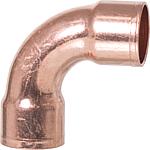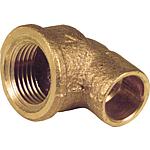0
WATCHLISTS
You must login before you can use the watchlist functions.
0
BASKET
You must login before you can use the basket functions.
Category
- New in Range
- WS Outdoor 2023
- Pipe systems
- Multi-layer composite piping in rolls and rods PEX and PE-RT
- Metal pipe in rolls and rods
- Pressfittings multi-layer composite piping
- Copper and gunmetal press fittings
- Stainless steel press fittings
- C steel press fittings
- Copper/gunmetal solder fittings
- Push fittings
- Threaded fittings
- Steel welded fittings
- Welding fittings PE
- Flanges
- Universal plug-in joint for all multi-layer composite piping
- Clamp and cutting ring connection
- Corrugated pipe gas system
- Corrugated pipe drinking water system
- Malleable cast iron clamp connector for steel pipe, small flue tube, gas
- Plastic PE screw connections
- Wall guide and sealing plugs
- Brass clamp connectors for steel pipe
- Brass screw connections for PE pipes
- Plastic welding system PPR
- Glue fittings made of PVC-U
- Frost protection heating strips
- Microflex telescope
- Aeroline connection cables
- Sealing and drilling clamps
- Plumbing installation
- Fixing, insulating, gluing, sealing
- Pipe fittings
- Irrigation, pumps, rainwater utilisation and lifting systems
- Central hoover + laundry chute
- Ball valves
- System separation
- Gas fittings
- Electric hot water tank
- Electronic instantaneous water heater
- GENERAL - replacement parts, installation
Search
More items in this category
Secure connections within the pipe installation
Soldered fittings made of copper are used for connecting copper pipes as well as for creating connections or transitions. Copper tubes are still one of the most widely used materials in piping installations due to their numerous advantages. The natural properties of copper such as their durability and high thermal load capacity make it the ideal material for all types of installation. This includes applications in plumbing technology, gas supply, solar technology and heating installations.
|
Copper pipes have also been used for decades in drinking water installations because of their health safety. Pipes and fittings for drinking water supply must be suitable and approved for this application. The relevant certification from the German Technical and Scientific Association for Gas and Water, or DVGW, ensures that the fittings do not have a negative impact on drinking water. Copper pipes used for this purpose must also have DVGW approval.
While modern copper cable pressing saves time and involves less effort, the soldering process still has benefits in many areas. A carefully soldered pipe connection can withstand heavy loads and is very durable. Depending on the application and type of pipe installation, the fitting and pipe can be connected using the soft soldering method or the hard soldering method. |
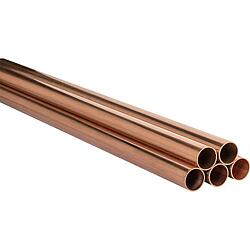
|
Different types of copper fittings allow changes of direction in the piping, reduction of the pipe diameter or the creation of a branch. There are also numerous gunmetal fittings to choose from for connecting fittings, as threaded transitions or screw connections.
Numerous variants of copper fittings for soldering
- Elbows for example can be used for simple directional changes within a pipe installation. They are available in different radii and with different diameters.
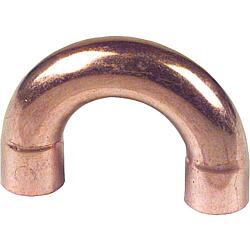 |
|
- There are also 180-degree elbows which are often used to solve problems within the installation and save from soldering two 90-degree bends.
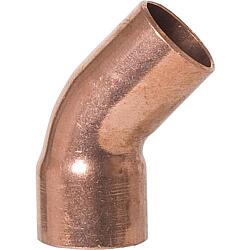 |
|
- There are also various versions of T-pieces with reduction are available, which provide an outlet with a reduced diameter.
- Copper fittings are also available in the form of various caps with different diameters, which can be used to reliably seal the end of a pipe with soldering.
Gunmetal fittings - another variant of solder fitting
While copper is ideally suited for the production of pipes and fittings, threads in particular are hard to create with this rather soft material. This is where gunmetal is used as it can be easily combined with copper piping and soldered. Gunmetal solder fittings are available in various shapes and designs for this purpose.
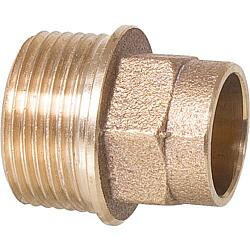 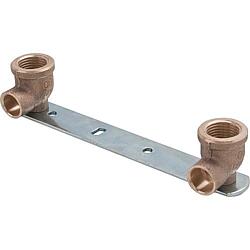 |
|
Soldering copper tubes and fittings has been tried and tested for decades in a wide variety of applications. One advantage of standardised sizes of copper fittings for soldering is that they can be combined as required. This means that fittings and pipes can be used from any manufacturer, which means that existing copper installations can be expanded in almost any way.
Copper pipes for use with fittings are available in various forms as rods in fixed lengths or as soft copper pipe from the roll. Various pipe dimensions and different designs with or without sleeve are also available for copper pipes for all applications.
Products |
